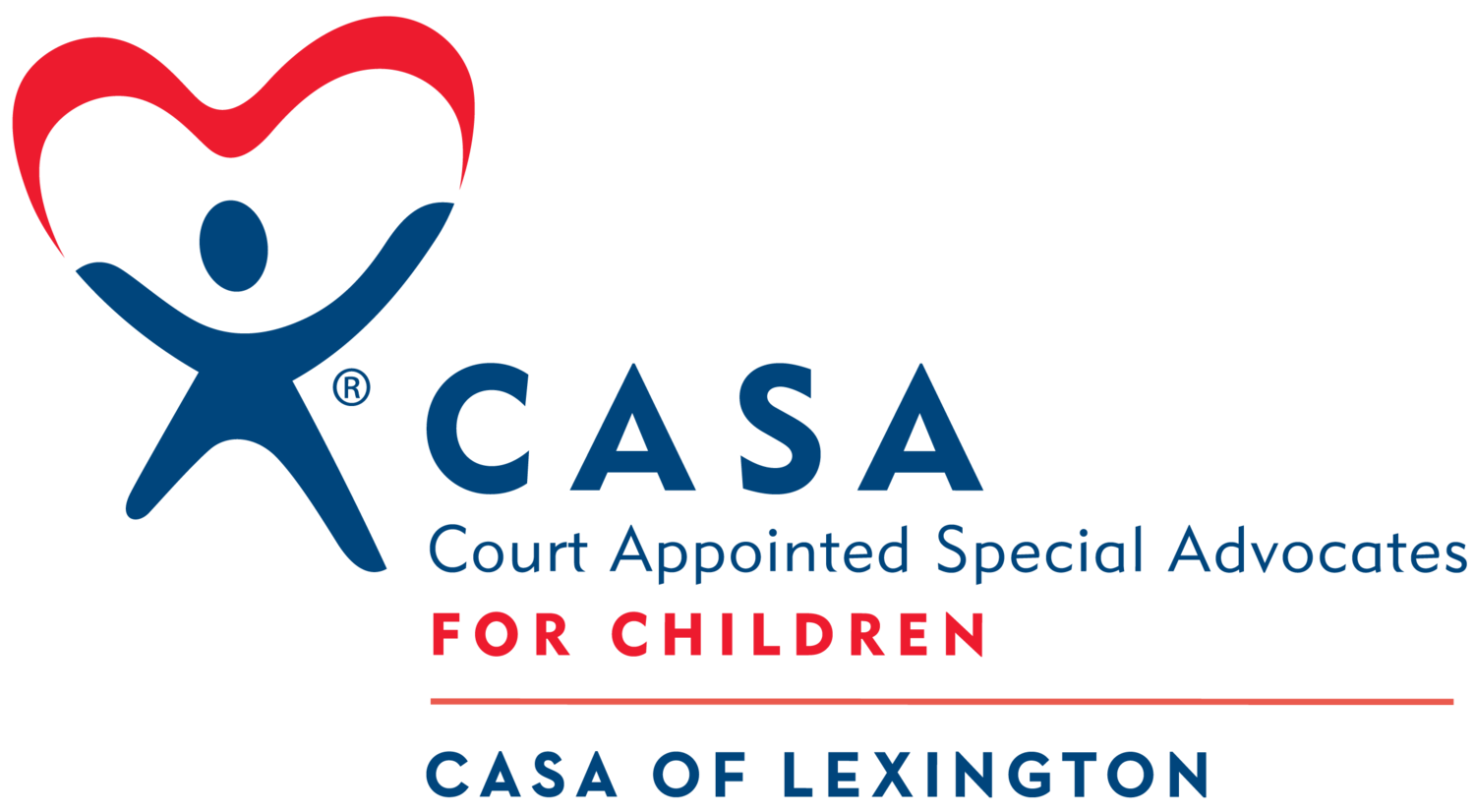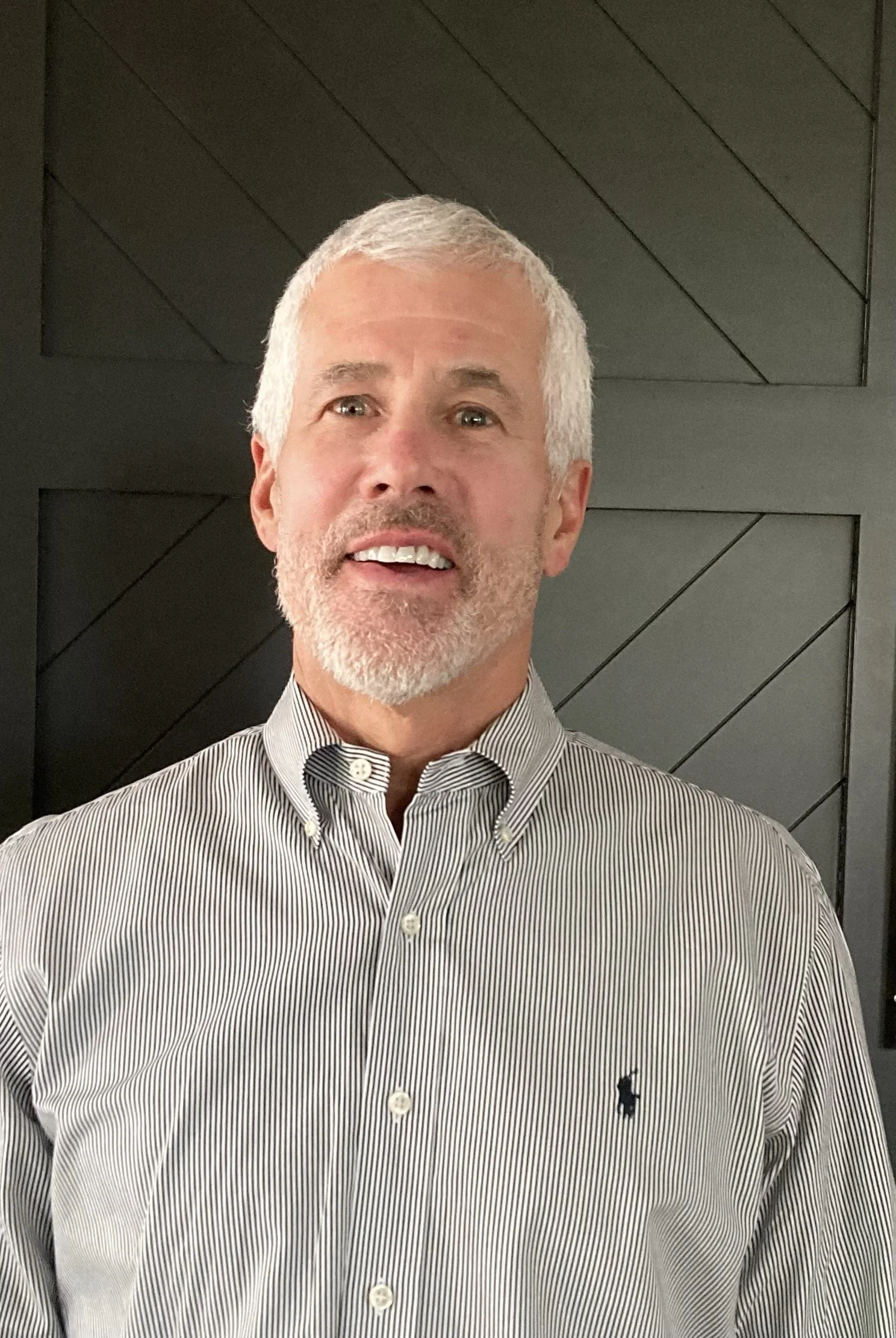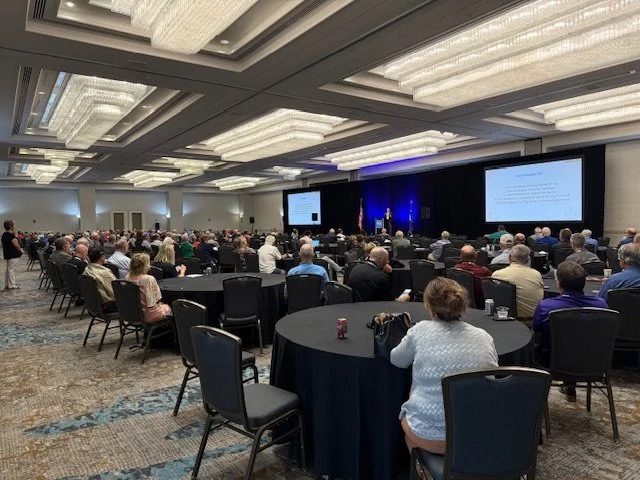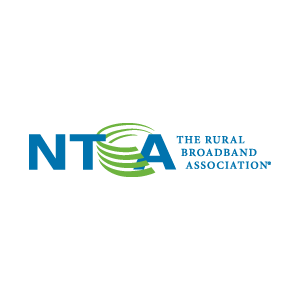
Latest News
CASA of Lexington Board Retreat
Honored to facilitate a Board retreat with the dedicated Board of Directors of CASA of Lexington. Grateful for their commitment to advocating for children and strengthening the organization’s impact in the community. Inspiring to see leaders come together with such passion and purpose! 💙
Join Me at the Maryland Nonprofits Conference October 9
I’m thrilled to share that I’ll be speaking at the Maryland Nonprofits 2025 Annual Conference, “Facing the Future Together,” on October 8 and 9, hosted in collaboration with the Comptroller of Maryland.
Join me for my session: Weathering the What-Ifs: Scenario Planning for Resilience
Register for #MANOAC25 using the link below and be sure to use the link FRIEND10 to receive 10% off your conference registration.
Welcoming Dave Neumann to the NTC Team
We are delighted to announce that Dave Neumann is joining the NTC team as an Organizational Development Consultant. Dave has been a friend and trusted colleague for years and his passion for helping leaders and organizations thrive aligns with our mission.
Dave brings over 40 years of experience helping organizations achieve breakthrough results in both for-profit and nonprofit sectors. He holds a PhD in Industrial & Organizational Psychology and built a distinguished career in HR and OD leadership, including 22 years with PepsiCo and Yum Brands. There, he served as Vice President of Organization Development and as Chief Human Resources Officer for KFC, Long John Silver’s, and A&W Restaurants.
Since 2012, Dave has advised national and regional organizations in healthcare, manufacturing, and the nonprofit sector, with expertise in:
Organization Alignment – Connecting strategy, structure, resources, and culture for maximum impact.
Culture Development – Designing and embedding high-impact organizational values.
Organizational Effectiveness & Change – Improving executive performance, team alignment, employee engagement, and change readiness.
Human Resources Strategy – Guiding performance management, succession planning, and leadership development.
In Dave’s own words:
“I’m thrilled to be joining Nielsen Training & Consulting as an Organizational Development consultant. Having worked with Greg for many years, I know his deep competence, integrity, and gift for helping organizations and their boards to thrive. With over 40 years of experience in both for-profit and nonprofit organizations, I specialize in creating organizational effectiveness, aligning strategy, structure, and culture, strategic planning, teambuilding, and leadership development coaching. I’m excited to partner with Greg to help organizations achieve their mission, engage their staff, and make a lasting impact in the communities they serve.”
A client’s perspective:
As Executive Director of Dare to Care Food Bank, one of my first decisions was to engage Dave to develop a new strategic plan, as well as create and institute a new organizational structure and performance review process. Dave took complete ownership of the process, working closely with me, key staff, board members and stakeholders to accomplish this work in both a timely and professional manner. That strategic plan and org/performance review process set Dare to Care on an amazing growth arc for over a decade.
Brian Riendeau, Executive Director Dare to Care, Retired
“I had the privilege of working with Dave to develop our organizational values and design an experiential training to cascade them across the company. His ability to translate our vision into an engaging, hands-on experience was remarkable, and over a year later, we’re still living these values every day. His insight, creativity, and passion left a lasting mark on our culture.”
Kila Sweeney, Chief People Officer, Ovation Healthcare
"I’ve had the privilege of working with Dave Neumann at two different companies, each time bringing him in to help us navigate culture transformation. Dave’s process is thoughtful, his analysis is spot-on, and his wisdom runs deep. His experience working with executive leadership was instrumental in helping us gain full buy-in from our leadership teams, ensuring our culture strategy had the support it needed from the top down. Dave has a way of turning “culture” from a concept into something real and actionable, which helped us roll it out in a way that truly connected with our people and made a measurable impact on engagement. On top of all that, Dave is just fantastic to work with—kind, collaborative, and one of the most impressive humans you’ll ever meet."
Dr, Jennifer Platt, VP Organizational & People Development, Lifepoint Health
Please join us in welcoming Dave to the NTC team. We’re excited about the expertise, insight, and passion he brings to our clients and the communities they serve. Whether your needs involve strategy, governance, or organizational development, you can explore how partnering with NTC can elevate your team by clicking the link below to learn more.
NTCA Summer Symposium
Scenario planning helps boards anticipate change, navigate uncertainty, and make more resilient, forward-looking decisions. Had the pleasure of leading a session on Scenario Planning: Leading Through Uncertainty at the NTCA Summer Symposium! Grateful for the opportunity to engage with leaders focused on navigating change and building resilient strategies for the future
PRTC/CDG Board Retreat
Just wrapped up a dynamic and engaging Board retreat in beautiful Hilton Head Island, South Carolina with the dedicated Board members of Palmetto Rural Telephone Cooperative - PRTC and CDG. It was a privilege to facilitate conversations centered on strategy, governance, and future growth. Grateful for their commitment to thoughtful leadership and impactful service!
Team Retreat: Direct Employers Association and Recruit Rooster
Just wrapped up a powerful 2-day session on Successfully Managing People with the leadership teams of DirectEmployers Association and Recruit Rooster! Grateful for the opportunity to support such thoughtful, mission-driven leaders as they invest in growing their teams, strengthening culture, and leading with intention.
AI for Nonprofit Boards: Navigating the Future with Purpose
Artificial Intelligence. For some, it still feels like a distant sci-fi concept. For others, it’s already part of daily life —guiding our Netflix picks, routing our GPS, or even helping us write emails. But for nonprofit boards, AI might seem like unfamiliar territory. The truth? It’s not just relevant—it’s essential.
AI is no longer the future; it’s the now. And while it can feel intimidating, it offers incredible opportunities for nonprofits to better serve their missions, operate more efficiently, and make smarter decisions. The key is understanding how to navigate this new landscape with intention and integrity.
Let’s explore what that looks like.
Why Should Nonprofit Boards Care About AI?
Boards are charged with big-picture thinking: strategy, oversight, and ensuring the mission stays front and center. That’s exactly why AI belongs on your radar. It’s not just a technology tool—it’s a strategic lever.
Think about the challenges facing nonprofits today: limited resources, growing demand, the need for data-driven impact, and evolving donor expectations. AI can help address all of these. From automating administrative tasks and analyzing donor data, to improving program delivery and forecasting trends, AI offers practical benefits that align with organizational goals.
But just because we can use AI doesn’t always mean we should. That’s where thoughtful governance comes in.
Common Uses of AI in the Nonprofit Sector
Let’s break it down with some real-world examples of how nonprofits are using AI:
Donor engagement: AI can analyze donor behavior and personalize outreach—sending the right message to the right person at the right time.
Grant writing: Some organizations are using AI tools to generate drafts or gather background research more efficiently.
Chatbots: These can answer frequently asked questions, freeing up staff time and improving responsiveness.
Data analysis: AI can quickly sift through years of program data to identify patterns, outcomes, or service gaps.
Volunteer matching: AI tools can help match volunteer skills and preferences to specific organizational needs.
These aren’t just tech gimmicks—they’re mission-enhancing tools when used responsibly.
The Role of the Board in AI Strategy
So, where does the board fit in?
Your job isn’t to become tech experts. It’s to ask smart questions, ensure ethical use, and align technology decisions with your mission and values. Here are some guiding questions boards should be asking:
How does this AI tool help us advance our mission?
What data will it use, and how is that data being protected?
Could this technology create unintended bias or harm?
Are we transparent with our stakeholders about our use of AI?
What guardrails are in place to ensure ethical use?
Just like any major strategic decision, AI adoption needs to be vetted for its impact—on people, privacy, equity, and mission.
Ethical Considerations Matter
AI is powerful, but it’s not perfect. It reflects the data it’s trained on, and if that data includes bias, the results can be skewed—sometimes in ways that harm marginalized communities. That’s a serious concern for mission-driven organizations.
Nonprofit boards have a responsibility to uphold values of equity, accountability, and transparency. That means pushing for clear policies on how AI tools are selected and used, especially when they affect people’s access to services, opportunities, or support.
Being proactive here is key. Don't wait for a problem to arise—start the conversation now.
Getting Started: A Few Practical Tips
You don’t need a tech background to start leading with confidence on AI. Here’s how your board can begin:
Educate yourself – Bring in a speaker, take a webinar, or read up on nonprofit use cases. Knowledge is power.
Start small – Identify one area where AI could help. Maybe it's donor outreach or internal reporting.
Include AI in strategic planning – This ensures it’s part of the big-picture vision and not just a shiny add-on.
Appoint a “tech liaison” on the board – Someone who can track trends and bring updates to the board regularly.
Review your policies – Ensure data privacy, ethical use, and equity are baked into your tech decision-making.
Navigating with Purpose
At the end of the day, AI is just a tool. It can’t replace human compassion, creativity, or community connection. But it canhelp nonprofits scale their impact when guided by thoughtful leadership.
That’s where you come in.
As a board member, you are the stewards of your organization’s future. Embracing AI doesn’t mean abandoning your values—it means using every resource available to advance them more effectively.
So ask the hard questions. Stay curious. Lead with purpose.
Because the future isn’t just coming—it’s already here. And nonprofits have a powerful opportunity to shape it for good. If your Board or leadership team would like to learn more or explore this topic, let's connect!
Walden School Board Retreat
Healthy Boards not only plan for the present, they explore possibilities for the future with curiosity. It was a pleasure to facilitate a long-range planning retreat with the dedicated Board of Directors of Walden School, an independent K-12 school in Louisville, KY. Thoughtful, mission-driven leadership like theirs is the foundation of lasting impact. Grateful for the opportunity to support their commitment to excellence and innovation in education! 🌟📚
Finding Your North Star Through Strategic Planning with CASA State Directors
Had the privilege of presenting a session on best practices in strategic planning for the dedicated CASA state directors from across the country. We explored how to find your North Star through intentional, mission-driven planning—and how strategic clarity can guide powerful impact for children and families. Grateful for the important work these leaders do every day and special thanks to Kentucky CASA Network for the invitation!
Alley Cat Advocates Strategic Planning Retreat
Alley Cat Advocates (ACA) provides for the humane treatment of unowned cats in the metropolitan Louisville, Kentucky area. They performed 6,886 Spay/Neuter Surgeries in 2024, in addition to the quality and compassionate care they provide daily for community cats. It was a joy to facilitate a strategic planning retreat with their Board and staff team. I am grateful for the opportunity to support their vision and help shape the future of this impactful organization. 🐱💙
Foundation for Louisiana Students Board Retreat
🧠✨ I had the privilege of facilitating a Board retreat with the dedicated leaders of the Foundation for Louisiana Students.
We explored the timely topic of Artificial Intelligence for Nonprofit Boards and took a deep dive into the Habits and Practices of Healthy Boards. It was an energizing and thoughtful session focused on innovation, good governance, and impactful leadership.
Grateful for the opportunity to support this outstanding Board in their continued growth and service to students across Louisiana!
MicroSociety Conference
MicroSociety is an experiential-learning model that empowers students to develop into leaders, entrepreneurs, creative forces, and confident citizens. I enjoyed speaking at their annual conference yesterday for teachers and administrators and participating in a panel entitled Investing in the Future: How Schools and Communities Can Empower Student Innovators and Changemakers.
Weathering the What-Ifs: Scenario Planning for Resilience
Most of us like to believe we know where we’re headed. Nonprofits, in particular, are mission-driven, focused, and goal-oriented. But let’s be honest: we don’t have a crystal ball. The world is unpredictable—funding can shift, policies can change, and crises can turn plans upside down overnight.
Enter: scenario planning.
While often associated with strategic planning, scenario planning is also a powerful standalone tool that nonprofits can use to navigate uncertainty, test assumptions, and make more resilient decisions.
Let’s explore what scenario planning is, why it’s useful, and how your nonprofit can start using it today.
What Is Scenario Planning?
Scenario planning is a method of imagining different versions of the future so your organization can prepare—not predict, but prepare.
It’s not about guessing exactly what’s going to happen. It’s about exploring what could happen—and thinking through how your organization might respond if it does.
This isn’t science fiction or wild speculation. Scenario planning is structured, strategic, and practical. It gives you a way to explore uncertainties and build contingency plans, so you’re not caught off guard.
Why Use Scenario Planning?
Many nonprofits think of scenario planning as a subset of strategic planning, and yes—it’s often included in that context. But you don’t need a multi-year strategic plan to benefit from it. In fact, scenario planning is often most helpful while implementing your strategic plan or during times of rapid change, when long-term planning feels impossible.
Here are a few reasons to use scenario planning as a standalone:
You’re facing major uncertainty: Economic downturns, elections, climate events, or funding disruptions can all create conditions where scenario planning becomes essential.
An unexpected opportunity arises: Should you expand services? Hire more staff? Launch a capital campaign? Scenario planning can help you assess the risks and implications.
You want to build organizational resilience: Thinking through different futures helps teams stay nimble and less reactive.
What Scenario Planning Looks Like in Practice
An external facilitator can be an important partner who creates a structured process that allows you and your team to fully participate in imagining and creating the plans that will guide the future of your organization. For me, a few critical steps include:
Step 1: Identify Your Driving Forces
What are the major uncertainties or trends that could affect your work? Examples might include:
Funding levels
Program enrollment
Staffing availability
Step 2: Create a Few Key Scenarios
Pick 2–3 distinct, plausible futures.
Step 3: Explore Impacts and Responses
For each scenario, ask:
What would we need to stop, start, or adjust?
What programs or services are most at risk?
How would we communicate with stakeholders?
What’s our financial contingency plan?
Step 4: Identify Common Threads
Are there actions that show up in all or most scenarios? Those are your high-leverage moves—things you can start doing now to prepare, regardless of which future unfolds.
Scenario Planning ≠ Worst-Case Planning
A common misunderstanding is that scenario planning is just “worst-case planning.” But it’s more balanced than that. You’ll explore a range of futures—optimistic, pessimistic, and somewhere in between.
The point isn’t to be gloomy. It’s to be ready.
Benefits Beyond the Plan
Even if none of your scenarios happen exactly as you imagined (and they probably won’t), the process still has big benefits:
Improves decision-making by encouraging big-picture thinking
Builds team alignment around possible risks and opportunities
Boosts resilience by creating a culture of adaptability
Reduces panic because you’ve already talked through "what if" situations
Plus, you’ll walk away with a playbook—not just for reacting, but for responding intentionally when change comes.
Planning in the Real World
When the path ahead is foggy, shifting, or completely unknown, scenario planning becomes your flashlight.
It helps you stay alert, responsive, and aligned—even in unpredictable conditions.
So don’t wait for the perfect moment or a formal planning cycle. Use scenario planning anytime your nonprofit needs to pause, think, and prepare for what might come next.
Because in today’s world, readiness is a critical companion to vision.
If you would like to discuss scenario planning for your organization, please reach out to us using the button below.
Children's Advocacy Centers of Kentucky Strategic Planning Retreat
Coalitions thrive when members are informed, engaged, and inspired to work together. Thank you to Children’s Advocacy Centers of Kentucky (CACKY) for asking me to facilitate their strategic planning retreat and planning process. CACKY is the statewide coalition of CACs dedicated to helping every child impacted by abuse. CACKY connects local CACs and partners with the tools, resources, and support needed to provide a comprehensive response to child abuse.
Last year, CACs in Kentucky served over 7,300 children from all 120 counties across the state. Children who receive services from a CAC are more likely to receive the medical and mental health services they need to help them heal from their abuse. Kentucky CACs provide over 12,000 mental health sessions to clients and non-offending caregivers each year. I am inspired by the bold goals and strategies this amazing group set in motion!
Board Champions 2025 at Welborn Baptist Foundation
In partnership with Welborn Baptist Foundation, I was honored to lead a session last week in Evansville, Indiana on Board Champions: Habits and Practices of Healthy Boards. I was so impressed with the talent and engagement of the Board members and nonprofit executives in the room as we had a fun and thoroughly interactive discussion!
Reach out to us if your organization or foundation is interested in bringing Board Champions to your community.
Congressional Medal of Honor Summit
Chartered by Congress in 1958, the Congressional Medal of Honor Society’s membership is comprised of those who wear the Medal of Honor, our nation’s highest military award for valor. I was humbled and honored to facilitate today’s Congressional Medal of Honor Summit, which brought together over 28 different organizations from museums, monuments, education and leadership institutions, military organizations, foundations and the National Park Service. They heard from Medal of Honor Recipients and discussed how they can share resources and better connect with each other and the Society.
Louisville Independent Business Alliance Strategic Planning Retreat
Locally-owned businesses are one-of-a-kind enterprises that are vital to the unique character of a community. Spent a great day with the Board of Louisville Independent Business Alliance (LIBA) facilitating their strategic plan. I encourage you to learn more about LIBA’s mission to cultivate the unique community character of the Metro Louisville area by promoting locally-owned, independent businesses and to educate citizens on the value of purchasing locally.
CASA of the Wilderness Trail Strategic Planning Retreat
Children who have been abused or neglected have many different people come in and out of their lives. CASA volunteers, however, stay involved and present for the child for the duration of their court case. CASA of the Wilderness Trail trains and supports community volunteers who advocate on behalf of abused and neglected children within the Family Court system. It was a privilege to continue my work with CASA programs across the country by facilitating a strategic planning retreat for this incredible organization.
Finding Your Voice in Advocacy
Over the past few weeks the nonprofit sector has navigated challenges from federal funding freezes to uncertain outcomes for those served. We have seen incredible advocacy work and accomplishments from nonprofit leaders and in my view insufficient support and partnership from philanthropy. Advocating for the mission of your nonprofit, the values it holds dear, and the wellbeing of those you serve takes courage and authenticity in finding your voice.
Here are some considerations to help nonprofit leaders navigate this important aspect of their leadership:
Clarify Your Mission and Values
Advocacy is most powerful when it aligns with the core values and mission of your nonprofit. Make sure you have a clear and shared understanding of what your nonprofit stands for.
Be Authentic and Personal
Your lived experiences and the experiences of those you serve can make your voice more powerful and relatable. Sharing personal stories can resonate with your audience on a deeper level.
Listen and Engage
Listen to the people you serve, your board, your staff, volunteers, and partners. Their input will help shape your advocacy voice and ensure that you’re not just speaking for others, but speaking with them. Advocacy is most effective when built on strong, trust-based relationships. Take time to connect with lawmakers, media, and community leaders who can amplify your message.
Be Informed and Knowledgeable
A well-informed leader can advocate with credibility. Research the policies or issues you’re addressing and understand the nuances so you can speak authoritatively. Understanding the arguments or viewpoints of those who may oppose your stance will help you navigate tough conversations and respond effectively.
Use Multiple Platforms and Channels
Social media is an effective tool for amplifying your voice. Share powerful stories, statistics, and calls to action across platforms. Your visibility can lend credibility to your advocacy efforts. Blog posts, newsletters, podcasts, and videos can be excellent tools to communicate your advocacy message to different audiences.
Develop a Clear Advocacy Strategy
What change are you trying to achieve? Having clear, measurable outcomes will help keep your advocacy focused and allow you to track progress. Partner with other organizations or individuals who share similar values to expand your influence and make a stronger case.
Establish Guardrails:
Take the time to develop guardrails around your nonprofit’s advocacy efforts. Who can speak for the organization? What are the limits? How will you separate your voice as a citizen from your voice as a representative of an organization?
Lead by Example
Demonstrate integrity and consistency in both your advocacy work and day-to-day leadership. Encourage and empower your team and supporters to use their voices as well. Collective action can be more impactful than an individual’s.
Be Persistent and Resilient
Advocacy often requires long-term commitment, and setbacks are common. Maintain your focus and stay committed to the cause even when progress is slow. As circumstances change, be open to adjusting your approach or tactics. The most successful advocates are those who remain flexible and responsive to new information.
Invest in Training and Capacity-Building
Nonprofit leaders should seek out training in advocacy, communications, and public speaking to strengthen their ability to effectively lead the organization’s efforts. Make sure your staff and board members also feel confident in their ability to speak on behalf of the nonprofit and take part in advocacy efforts.
By following these best practices, nonprofit leaders can create a strong, authentic, and effective voice. My message to the nonprofit leaders and Board members out there is simple – thank you and I see you.
What is Your Board's Standard? 🤔
“The standard you walk past is the standard you accept.”
Lieutenant General David Lindsay Morrison, former Chief of the Australian Army, made this statement in response to inappropriate behavior within the military, but it has always stuck with me because of its application to other arenas, including the nonprofit Board room.
Board members are the owners – the standard bearers – of their team. They shape the culture of the team and set the standard for its performance. Board members who fulfill expectations and are accountable for their commitments contribute to a high standard of performance. Likewise, Board members who witness a problem or behavior and fail to address it are implicitly accepting it as the new norm.
Healthy Boards reflect on the standard they are setting in many areas, including:
1. Setting Organizational Culture
Nonprofit boards play a critical role in shaping the culture and ethics of the organization. If board members allow low standards—whether it’s poor governance, lack of accountability, or ineffective fundraising practices—they are implicitly accepting those standards as the new baseline. Over time, this can erode the organization's mission, reputation, and ability to deliver on its goals.
2. Accountability
Board members have a fiduciary duty to ensure that the nonprofit operates efficiently, ethically, and in accordance with its mission. If they overlook financial mismanagement, unaddressed conflicts of interest, or ineffective leadership, they are condoning those behaviors. By walking past these issues, boards risk harming the nonprofit’s long-term sustainability and undermining public trust.
3. Leadership and Influence
Boards set the tone for executive leadership. If nonprofit leaders see that the board tolerates substandard behavior or practices, they may feel emboldened to act in ways that don't align with the organization's values. Boards should be proactive in holding leadership accountable, providing guidance, and ensuring that the nonprofit's values are reflected in every aspect of its operation.
4. Risk Management
Boards are responsible for identifying and managing risks, including legal, financial, and reputational risks. By walking past risky behavior or inadequate systems, they expose the organization to unnecessary dangers. Nonprofit boards must be vigilant and prepared to step in when things go wrong, before the situation worsens or becomes irreparable.
5. Setting Expectations
One of the most important roles of a nonprofit board is to set clear expectations for performance. If board members fail to address underperformance or missed opportunities, they send a message that mediocrity is acceptable. This can have a ripple effect throughout the organization, from staff members to volunteers, and can ultimately diminish the nonprofit’s impact.
6. Building a Culture of Excellence
Boards should actively cultivate a culture of excellence by setting high standards, regularly reviewing performance, and ensuring that resources are used efficiently and effectively. By doing so, they help the nonprofit fulfill its mission in the most impactful way possible. If board members allow mediocrity, they reduce the nonprofit's ability to achieve its goals and make a difference in the community.
7. Encouraging Transparency
Effective boards encourage openness and create an environment where transparency is the norm.
What is your Board’s standard?
If your Board is ready to evaluate or elevate its standard, let’s talk!
























